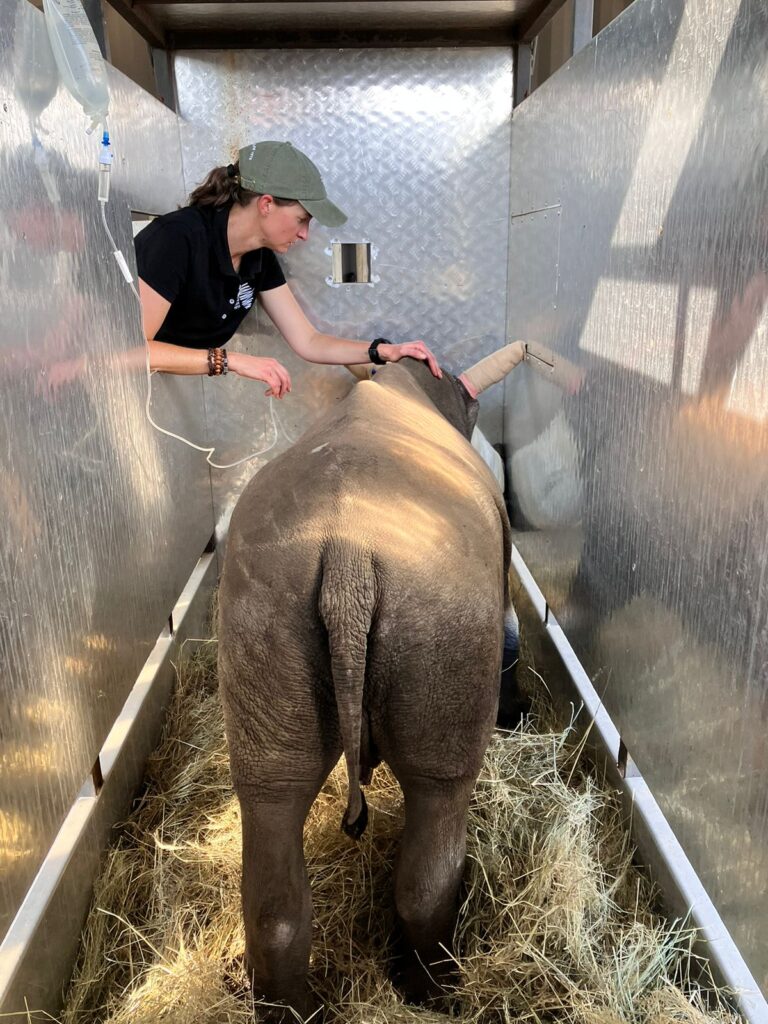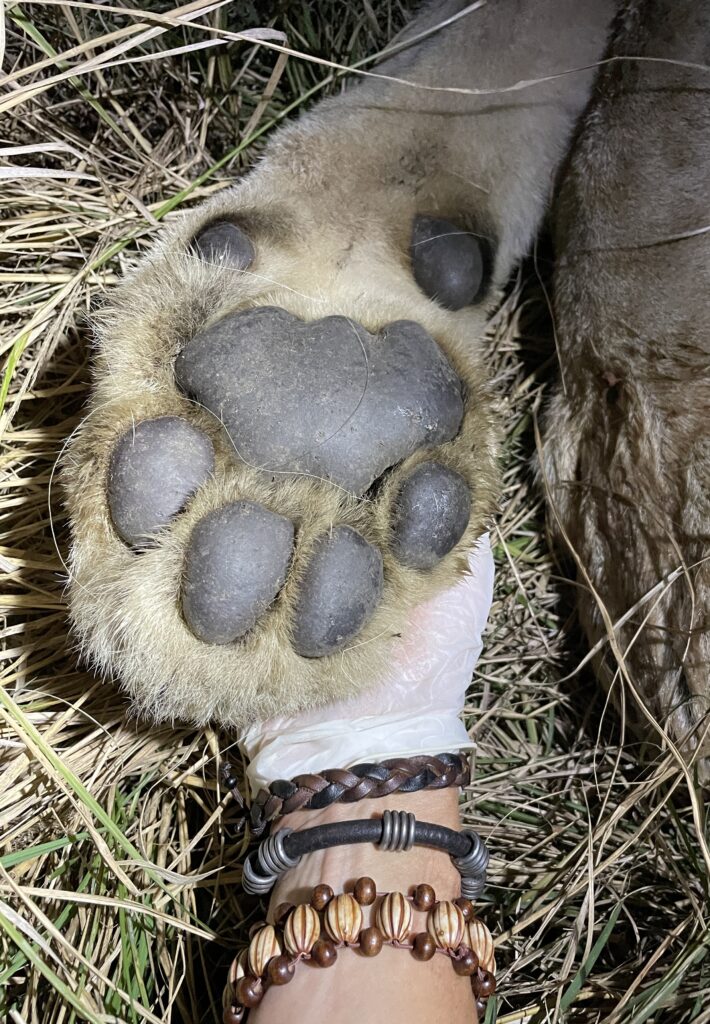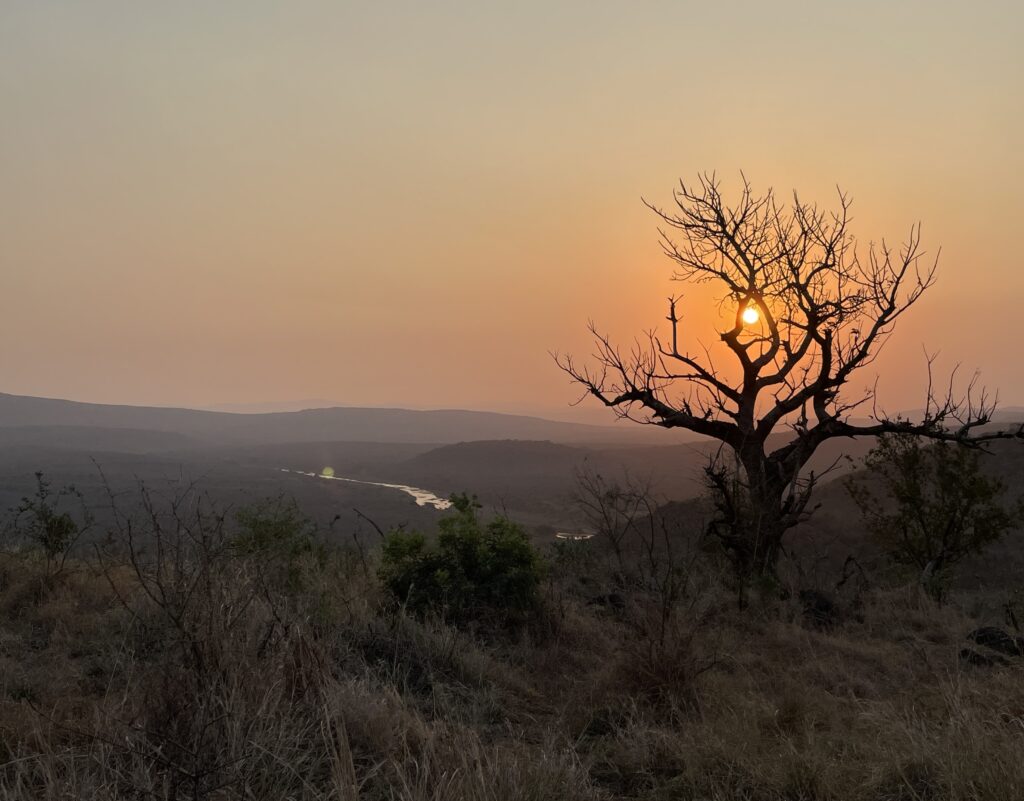In this wonderful blog post from one of our current students, on the MVetSci programme in Conservation Medicine, we learn a little about what it is like working on the front-lines of rhino poaching. Jennifer shares with us what has led her to become a conservation vet and why she cares so much about making a trauma-informed contribution to nature conservation. As she does so, she helps us to understand the extent to which Conservation Medicine is becoming an interdisciplinary field and, in this instance, how it is learning from the field of Collective Trauma Studies. Jennifer has chosen to focus her research for her dissertation on the need for trauma awareness in rhino poaching and why trauma awareness is essential if we are to sustain ourselves in the interdependent work of conserving nature and healing ourselves. We hope you enjoy reading about the horizons her studies and work are helping her explore.
Being a conservation vet in challenging times
(Jen Lawrence)
“I tell you this
to break your heart,
by which I mean only
that it break open and never close again
to the rest of the world”
(From the poem Lead by Mary Oliver)

Figure 1: A landscape of possibility
I write to share my heartfelt journey of living and working as a conservation vet in South Africa and how this is continuing to shape the person I am. I am nearing the end of my dissertation year on the Masters in Conservation Medicine programme. Through what follows, I share with you how I am continuing to widen my circle of caring and deepen my connection to myself and Mother Earth. I hope that in sharing this, you may consider how we might all allow our hearts to break open to this world.
It is no secret that the world we humans have constructed and know is unravelling at an overwhelming pace. We only have to look outside and see how we have transformed landscapes and ecologies, leaving a wake of destruction and painful loss. Wild spaces are diminishing, and wild beings are more unwittingly entangled and lost in the complexities of how we are shaping this world. Turning away is easier than facing the suffering and so we continue to sleepwalk through life. This only prolongs the pain and constricts our ability to truly feel love and joy at being alive. As a conservation vet working on the front-lines of wildlife conservation and rhino poaching in South Africa, I acknowledge my grief and personal suffering as I continue to witness the loss of our natural spaces and species. Whenever I find myself facing suffering head on, my awareness of how necessary it is to break our hearts open deepens. It is at times like this that I truly remember who I am, and who we are in the intricate web of life.
 Figure 2: The author tending to a traumatised orphan rhino
Figure 2: The author tending to a traumatised orphan rhino
How my personal journey is breaking my heart open
I am relatively new to the conservation space. In 2021 I moved back home after several years in the UK working in small animal clinics, and started my conservation journey in 2022. In 2023, I took up a full-time position with African Wildlife Vets which has put me in the heart of the African bush. In this time, I have come to understand what it means to be passionate, heartbroken, inspired, humbled, grateful and in awe. When I started out, I already felt that my purpose was rooted in my connection to Mother earth, and that I am only one small thread weaving through the complexities and challenges that we face. Little did I know what an impact this space would have on me. Living with nature as I do now has given me more space to connect and delight in the wonders of life; it has also brought me closer to the pain and suffering of beings who were here long before us. Standing with the shattered body of yet another rhino whose life was ruptured by the brutality of greed, I bear witness to the collective heart break of those present. Watching how another wild dog limps along, with a wire snare cutting deeper into her body, terrified, confused and in pain … and how she is held collectively by her pack, courageously trying to keep her alive. Feeling the sigh of relief when another black rhino, who has unknowingly wandered into unwelcome human populated territory is spotted and brought back home. Seeing the confusion and fear on the face of an orphan rhino as we try and bring him to safety and witnessing the dedication and commitment of those looking after him.

Figure 3: Recognising our interconnectedness
Threading through these stories is a depth of suffering and some may say a sense of hopelessness at what continues to unfold. This is the stark reality of the challenges we face. There is another element that I want to invite into this space; it is easy to get so wrapped up and spiral into despair and there are times where I catch myself doing exactly that. Allowing myself the space to mindfully move through the pain, I reflect on what I am being taught by nature herself each time I am gifted an opportunity to work with her. Early on I made a commitment to not only serve her, I also wanted to learn from her. Robin Wall Kimmerer describes how knowledge and learning happen through a respectful and reciprocal interaction with all forms of life on earth, not only human (Wall Kimmerer, 2021). Her words have encouraged me to step beyond the confines of my mind and to patiently observe and absorb the mysteries of nature and how they relate to my own life. I have come to appreciate that I am part of a deeply connected community and that we are just as complex and vibrant as the landscapes and beings with whom we work. I have learnt what humility truly means, being outwitted, and outsmarted on several occasions by hyena and wild dogs. I have witnessed how deep the connection runs between a mother and her young. I have witnessed the arrival of the next generation of young antelope and shared in their joy and delight as they playfully danced together in the day’s fading light. The construct of certainty begins to dissolve, leaving space to welcome in the slow, flowing pace of nature.

Figure 4: Pausing to appreciate the marvelous beauty of nature
This slow, flowing pace continues to be swept up by a sense of urgency of what we face on a continuous basis – the rapid decline of biodiversity and the urgent need to protect it. This comes at an emotional and physical cost to passionate and dedicated conservationists who have been facing this suffering for much longer than I have. Hearts continue to break; tough outer armour is wrapped around more tightly protecting an inner tenderness that has been fragmented by bearing witness to the suffering and loss. I have come to know this heart break personally and by listening to colleagues reflecting on their experiences. This led me to focus my Masters dissertation on the need for trauma awareness for those working on the frontline of rhino poaching. As my project has progressed, I have come to understand from first-hand experience how necessary it is to become more trauma informed and aware. Ignoring the fracturing of our emotional landscapes leaves us lost and more afraid than ever. In an interview with Emergence Magazine, Joanna Macy describes how despair is a form of profound caring, and when we tend to it and acknowledge it, we can transform it and turn towards action (Emergence Magazine, 2018). Without facing the heart break, we will not be able to break our hearts open to live in a more compassionate and tender communion with all of life.
References:
Emergence Magazine. (2018). Widening Circles– with Joanna Macy. [online] Available at: https://emergencemagazine.org/interview/widening-circles/ [Accessed 6 Feb. 2024].
Oliver, M. (2017). Devotions: The selected poems of Mary Oliver. New York: Penguin Press, p146.
Wall Kimmerer, R. (2021). Gathering moss: A natural and cultural history of mosses. London: Penguin Books, p82.